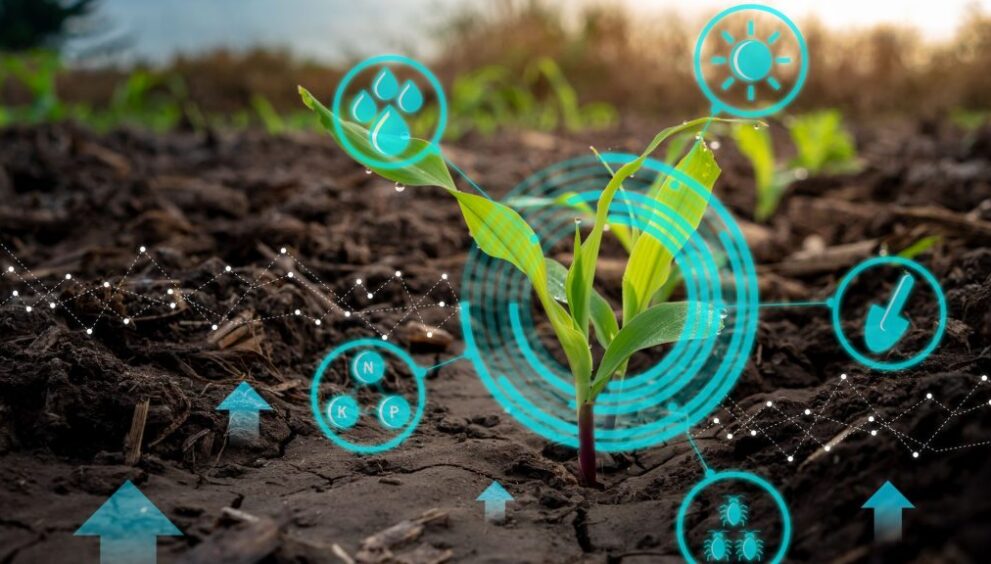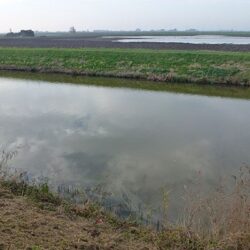The use of new farming technology is on the rise in South Africa and has the potential to enhance productivity and efficiency, which is good news for farm owners. But, as Gift Mwonzora writes, it may be bad news for farm workers whose job security may be under threat.
Across South Africa, farms are ramping up their use of technology. Adopting and using new techniques such as digital surveillance for monitoring and harvesting will increase yields and put some, but not all, jobs under threat.
In some cases, the ramifications of new farm technology on labour have yet to be felt. However, this does not mean that the South African agricultural sector will be sheltered from the negative impact of technology on labour.
Pixels in the orchards
As elsewhere in Africa, South African farmers have been slow adopters of technology. One reason for this is the cost-benefit analysis of acquiring and maintaining new technology versus sustaining manual labour.
In South Africa, labour is relatively cheap. It is, therefore, cost-effective for farms to employ vast labour forces to work the land. In contrast, the financial investment required for digitalisation, gadgets, and mechanisation can involve high upfront costs, which many farmers do not have.
Despite the financial barriers, some farmers in South Africa are already automating and replacing manual production processes with digital gadgets and machinery. These include packing/sorting machines and heat-sealing machines for packaging fruits. Huge strides have also been made in digitalisation through the deployment of Artificial Intelligence (AI), IoT sensors (to enhance yield and crop quality), automated irrigation systems (which adjust watering amounts and schedules) based on soil moisture, plant needs and environmental conditions. Scanners, bar code readers, mobile phones, and smart tablets are used in the packing and delivery of products. Drone-based remote sensing and satellite imagery for pest detection have also helped optimise the outputs from some farms. But these technologies do not come cheap.
Adoption of such technologies is a gradual process. It is a farming marathon, not a sprint. It involves significant financial investment to acquire and maintain the technology and machinery and many farms exist on thin profit margins. Upfront costs matter and the financial implications of a wrong or poorly timed decision can be huge.
Farm labour vs technology
While adopting new technology is a welcome development for farm owners, trade unions and workers are concerned about the impact of such on employability and job security. These concerns feed into growing fears about how technology reshapes the quality and quantity of jobs in different sectors.
Some view the negative impact as a distant prospect, while others are already seeing and experiencing the effect. This is witnessed in the precarity of farm labour owing to the introduction of new farm technology coupled with macroeconomic challenges undergirding low farm productivity in South Africa. The country suffers from irregular electricity supply and extreme weather due to climate change, which is characterised by droughts and ongoing uncertainty regarding land expropriation.
South African farm workers have always been poorly remunerated. The sector was already reeling under the increasing seasonality and casualisation of labour. Employers do not want to hire full-time labour force which is then entitled to full benefits as enshrined in the South African Labour Relations Act. Instead, they opt to employ workers during peak seasons on a contract basis.
No doomsday scenario, yet
Considering how capital works, it is a truism that every farmer will opt for labour-cutting costs if the machines can perform tasks more efficiently and cheaper than their human counterparts. But there is a reason to be upbeat.
Despite the push for technology, more machines aren’t always the answer. In the South African citrus farming sector the human labour force is vital. Players in the sector term it a ‘delicate sector’ due to the sensitivity of the produce. It also still requires human hands and discerning eyes to identify blemishes. The human component is still essential in this regard.
As things stand in the South African agricultural sector, predicting the end of human farm labour would be too much of a stretch. Despite some movement on some farms, many farmers still use second-hand agriculture machinery, and cannot afford the latest model, let alone the latest tech. The cost of acquisition and the need for expert maintenance of such technology is also holding back its adoption in much of South Africa. Until the country can manufacture its own technology, rather than rely on expensive imports, a large-scale investment in tech and the displacement of human labour is unlikely.
If history is any guide, the agricultural revolution and the introduction of tractors, while impacting the agricultural sector, did not lead to the total displacement of human farm labour. The overall numbers of employees were dramatically reduced, but new tasks, jobs and activities were created. The same could also be said in this digital revolution and mechanisation era in the context of South Africa.




